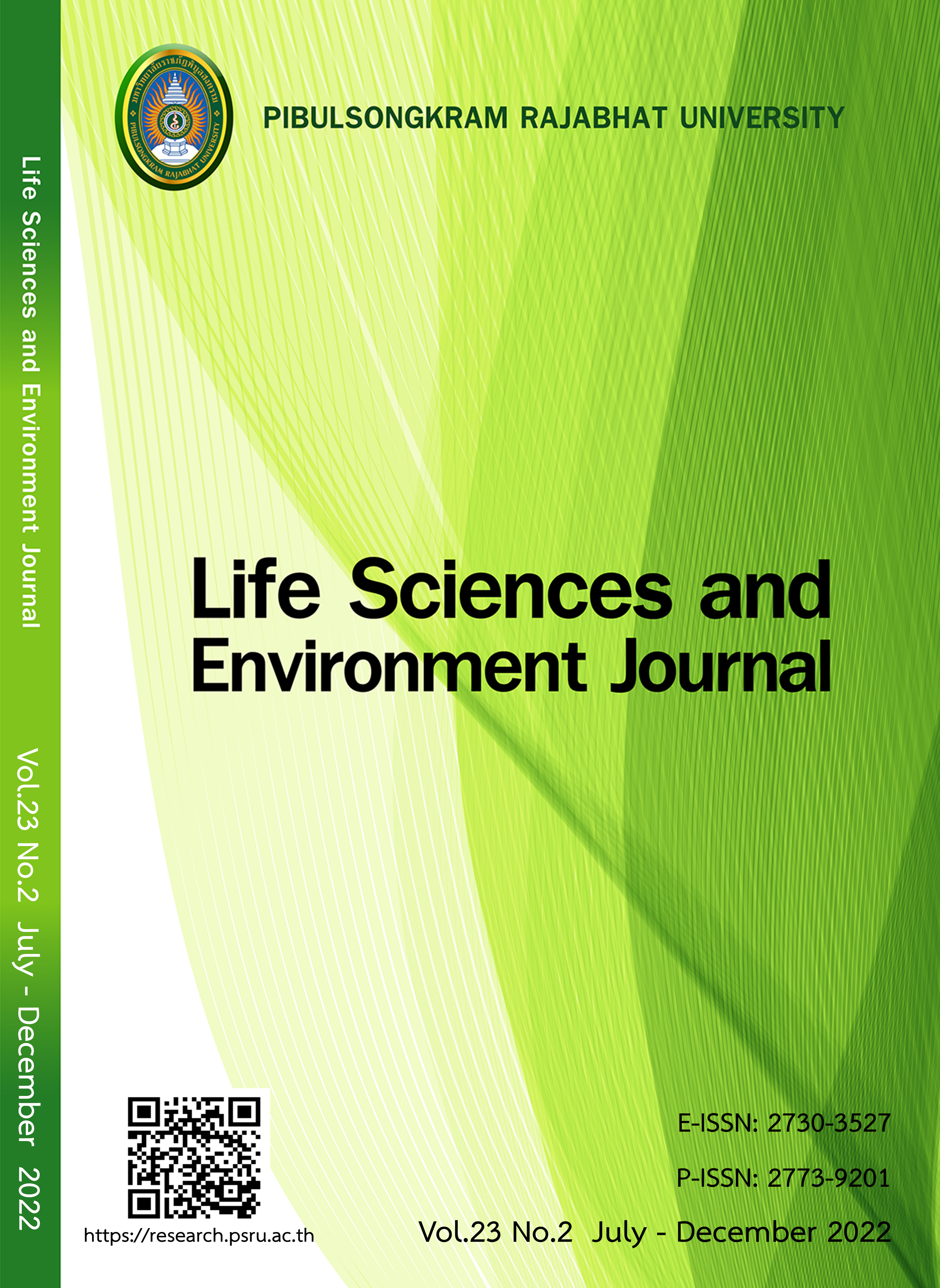STUDENTS' SATISFACTION ON HYBRID LEARNING OF ANIMATION MAJOR UNDERGRADUATE STUDENTS IN CHENGDU, CHINA
DOI:
https://doi.org/10.14456/lsej.2022.32Keywords:
Students' satisfaction, Hybrid learning, Animation major, Undergraduate studentAbstract
The study was designed to explore factors influencing the satisfaction of animation undergraduates from Chengdu universities with hybrid learning. First, the conceptual framework in the study was based on three-tier use the model (3-TUM) and the information systems (IS) success model, including Self-efficacy (SE), System quality (SYQ), Information quality (IQ), Service quality (SQ), Perceived value (PV) and Satisfaction (SAT). It also presented relationships between influencing factors in the model. The researcher took an approach of judgement and quota samplings to verify the model by drawing 497 animation undergraduates from three public universities in Chengdu for quantitative research, with questionnaires to collect data. Second, confirmatory factor analysis (CFA) and structural equation model (SEM) were employed for data analysis, including goodness of fit, validity and reliability of structure. The criterion for model fit index was CMIN/DF<3.00, GFI≥0.90, AGFI≥0.80, RMSEA<0.05, CFI≥0.90, NFI≥0.90, TLI≥0.90. Model fit indexes of the adjusted CFA and SEM are within such standards. The above analysis contributed to the extent of influencing relations between various factors: service quality had the biggest positive effect on animation undergraduates’ satisfaction with hybrid learning with standardized path coefficient value of 0.429 (t=9.058***) and had the minimal impact on perceived value as marked by standardized path coefficient being 0.182 (t=3.962***). Perceived value has a direct implication for satisfaction, as evidenced by the standardized path coefficient of 0.275 (t=6.357***). Self-efficacy had a positively strong implication for students’ satisfaction with hybrid learning, which served as the second-leading factor influencing satisfaction with a standardized path coefficient of 0.379 (t=9.398***). Meanwhile, students’ satisfaction with hybrid learning was influenced by information quality and system quality, with the standardized path coefficient of 0.316 (t=8.128***) and 0.264 (t=6.053***) respectively. The study revealed that we need to take into account factors influencing students’ satisfaction with hybrid learning in ways that make their learning more enjoyable. Learning atmosphere for hybrid learning must be refined for better effect and satisfaction.
References
Bauer HH, Falk T, Hammerschmidt M. Etransqual: a transaction process-based approach for capturing service quality in online shopping. Journal of Business Research 2006;59(7):866-75.
Browne W, Cudeck R. Alternative ways of assessing model fit. In: Bollen KA, Long JS (Eds.). Testing structural equation models: Newbury Park, CA: Sage; 1993.
Chen, Z, Yang S, Huang J. Constructing an e-portfolio-based integrated learning environment supported by library resource. The Electronic Library 2015;33(2):273-291.
Cigdem H, Ozturk M. Factors affecting students’ behavioral intention to use LMS at a Turkish Post-Secondary Vocational School. International Review of Research in Open and Distributed Learning 2016;17(3).
Clemes MD, Cohen DA, Wang Y. Understanding Chinese university students’ experiences: an empirical analysis. Asia Pacific Journal of Marketing and Logistics 2013;25(3):391-427.
DeLone WH, McLean ER. The DeLone and McLean model of information systems success: a ten-year update. Journal of Management Information Systems 2003;19(4):9-30.
Dugar, D. Skew and kurtosis: 2 important statistics terms you need to know in data science. Medium; 2018.
Filippini R, Forza C, Vinelli A. Trade-off and compatibility between performance: Definitions and empirical evidence. International Journal of Production Research 1998;36(12):3379-3406.
Fornell C, Larcker DF. Structural equation models with unobservable variables and measurement error: algebra and statistics. Journal of Marketing Research 1981;18(3):328-388.
Hair JF, Black WC, Babin BJ, Anderson RE, Tatham LR. Multivariate data analysis (Vol. 6). Upper Saddle River, NJ: Pearson Prentice Hall; 2006.
Hair JF, Money H, Page M, Samouel P. Research Methods for Business, Education + Training 2007;49(4):336-337.
Hair JF, Hult GTM, Ringle CM, Sarstedt M. Multivariate data analysis: A global perspective (7/e), Pearson Education, New Delhi; 2013.
Hong JC, Hwang MY, Szeto E, Tsai CR, Kuo YC, Hsu WY. Internet cognitive failure relevant to self-efficacy, learning interest, and satisfaction with social media learning. Computers in Human Behavior 2016;55(1):214-222.
Israel GD. Sampling the evidence of extension program impact. Gainesville, FL: University of Florida Cooperative Extension Service, Institute of Food and Agriculture Sciences, EDIS; 1992.
Jia WJ, Huang YZ, Chen WY. College students' online learning experience: Influencing Factors and Improvement strategies. Journal of Curriculum Theory and Teaching Reform 2021;42(3):60-74.
Johnson R.D, Hornik S, Salas E. An empirical examination of factors contributing to the creation of successful e-learning environments. International Journal of Human-Computer Studies 2008;66(5):356-369.
Klassen RM, Chiu, MM. Effects on teachers' self-efficacy and job satisfaction: Teacher gender, years of experience, and job stress. Journal of Educational Psychology 2010;102(3):741-756.
Kline, Rex B. Principles and practice of structural equation modeling. 4th ed. New York. ISBN 978-1- 4625-2334-4. OCLC 934184322; 2016.
Liaw SS, Huang HM. Perceived satisfaction, perceived usefulness and interactive learning environments as predictors to self-regulation in e-learning environments. Computers & Education 2013;60(1):14–24.
Lisa X. Analysis of the development status of China's animation industry in 2019. Available at: https://www.qianzhan.com/analyst/detail/220/200228-0ea5b576.html. Accessed February 8, 2021.
Masrek MN, Jamaludin A, Mukhtar SA. Evaluating academic library portal effectiveness: A Malaysian case study. Library Review 2010;59(3):198-212.
Malhotra N, Hall J, Shaw M, Oppenheim P. Essentials of marketing research, An applied orientation: Pearson Education Australia; 2004.
Mansour B, Mupinga DM. Students’ Positive and Negative Experiences in Hybrid and Online Classes. College Student Journal 2007;41(1):242-248.
Shrestha, N. Detecting Multicollinearity in Regression Analysis. American Journal of Applied Mathematics and Statistics 2020;8(2):39-42.
Tam JLM. Customer satisfaction, service quality and perceived value: an integrative model. Journal of Marketing Management 2004;20(7):897-917.
Wu JH, Wang YM. Measuring KMS success: are specification of the DeLone and McLean model. Information & Management 2006;43(2):728-739.
Wang YS, Wang HY, Shee DY. Measuring e-learning systems success in an organizational context: scale development and validation”, Computers in Human Behavior 2007;23(4):1792-1808.
Yang BR, Analysis of the current situation of animation education in Chinese universities. Industry and Technology Forum 2019;18(8):102-105.
Yang JT. Antecedents and consequences of job satisfaction in the hotel industry. International Journal of Hospitality Management 2010;29(4):609-619.
Downloads
Published
How to Cite
Issue
Section
License
Copyright (c) 2022 Life Sciences and Environment Journal

This work is licensed under a Creative Commons Attribution-NonCommercial-NoDerivatives 4.0 International License.
Each article is copyrighted © by its author(s) and is published under license from the author(s).










